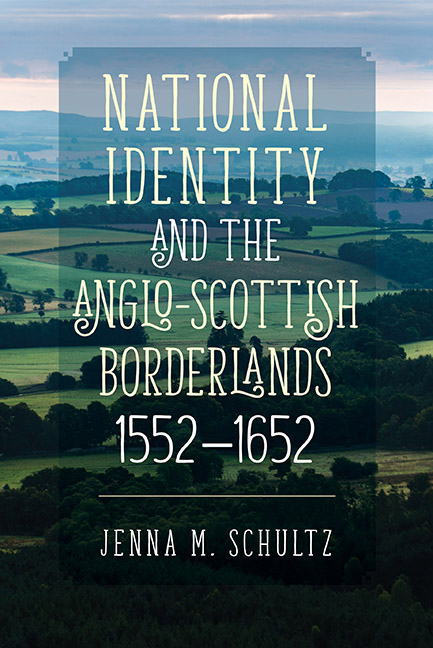Book contents
- Frontmatter
- Dedication
- Contents
- List of Illustrations
- Acknowledgements
- List of Abbreviations
- Conventions
- Chronology
- Map
- Introduction
- 1 Administration
- 2 Borderers
- 3 Border Towns and Fortifications
- 4 Moments of Crisis
- Conclusion
- Appendix 1 List of Wardens, 1552–1603
- Appendix 2 List of Lords Lieutenant
- Bibliography
- Index
- STUDIES IN EARLY MODERN CULTURAL, POLITICAL AND SOCIAL HISTORY
- Frontmatter
- Dedication
- Contents
- List of Illustrations
- Acknowledgements
- List of Abbreviations
- Conventions
- Chronology
- Map
- Introduction
- 1 Administration
- 2 Borderers
- 3 Border Towns and Fortifications
- 4 Moments of Crisis
- Conclusion
- Appendix 1 List of Wardens, 1552–1603
- Appendix 2 List of Lords Lieutenant
- Bibliography
- Index
- STUDIES IN EARLY MODERN CULTURAL, POLITICAL AND SOCIAL HISTORY
Summary
On 24 March 1603, Robert Carey, warden of the English Middle March, rode to Scotland to inform James VI that he was now the king of England. Elizabeth I had died without issue, leaving her cousin to succeed her. Though initially a dynastic and monarchical union, the newly crowned King James VI/I hoped to create a single kingdom that was united by more than just his person, and this would involve fundamental changes to the ecclesiastical, legal, economic and other institutions of both England and Scotland. As part of this plan, he sought to eliminate the Anglo-Scottish borderline that had divided the kingdoms for centuries. The Borders had been the centre of many conflicts between rival monarchs, most recently at the 1545 Battle of Ancrum Moor near Jedburgh, Scotland during the Rough Wooing. Such battles were part of the living historical memory within the borderlands as well as throughout both kingdoms. In his 1604 speech to the English parliament, the king emphasized his quest to eliminate this animosity, asking, ‘Yea, hath God not made us all in one Island, compassed with one Sea, and of it selfe by nature so indivisible, as almost those that were borderers themselves on the late Borders, cannot distinguish, nor know, or discerne their owne limits?’ King James sought to usher in a new era of peaceful relations by instituting measures to bridge the Anglo-Scottish divide and serve as a possible means to create stronger unity. Yet accomplishing such measures was not easily achieved.
National Identity and the Anglo-Scottish Borderlands, 1552–1652 contends that the legislative programmes, changes to the local administration, cross-border relations and numerous regional commissions highlight the challenges facing King James VI/I as he attempted to transform the borderlands into the ‘Middle Shires’ of a united Great Britain. Part of this process included the elimination of the borderline. Yet there was no rapid transformation; the two kingdoms remained relatively independent of one another well into the seventeenth century. This was due in part to the strength of already-existing national identities that were reinforced by the continuation of the Anglo-Scottish border as a line of division. Regardless of its actual political existence, the border persisted in the hearts and minds of the king's subjects and continued to serve as a reminder of the centuries of separation between the two kingdoms.
- Type
- Chapter
- Information
- Publisher: Boydell & BrewerPrint publication year: 2019



